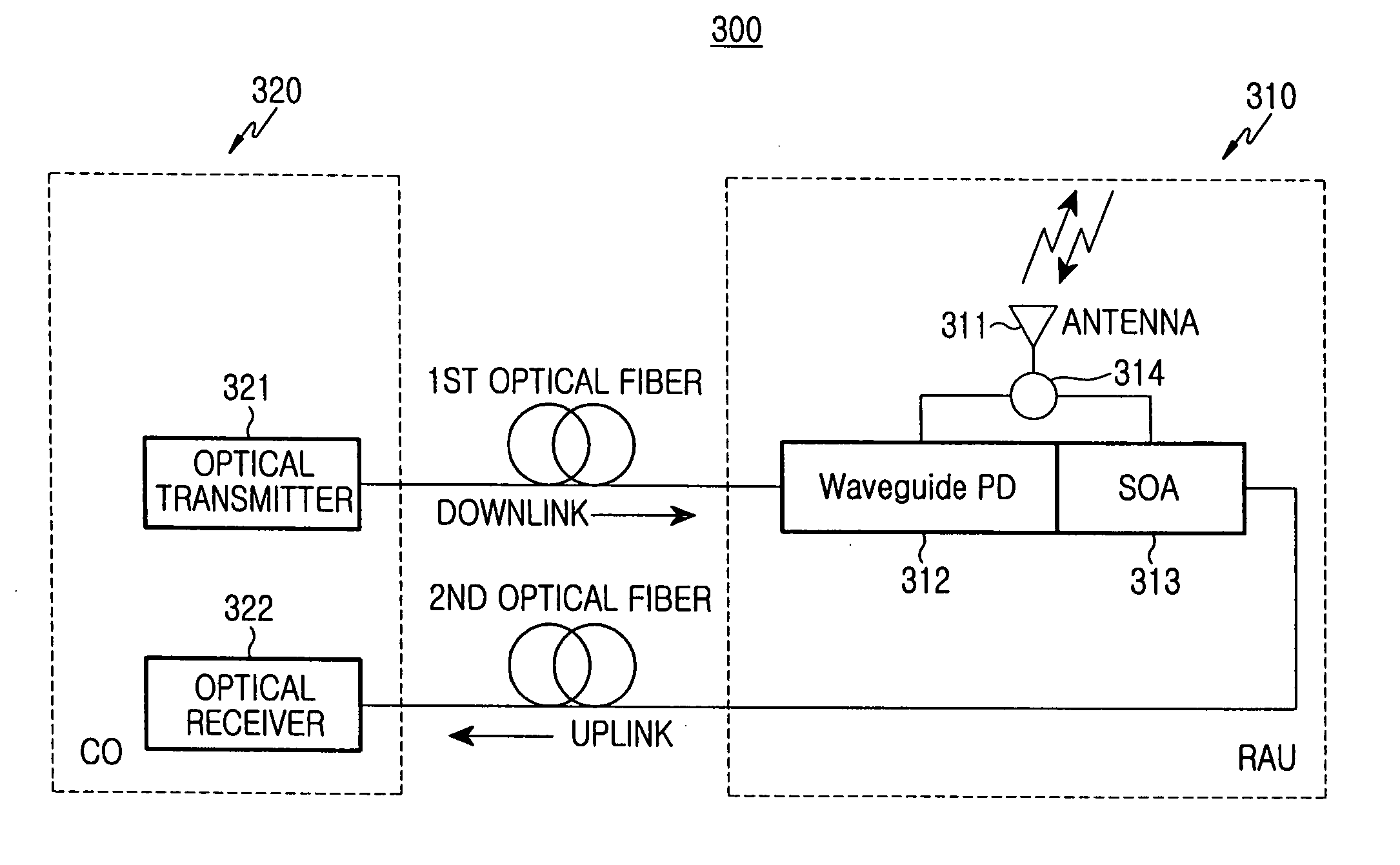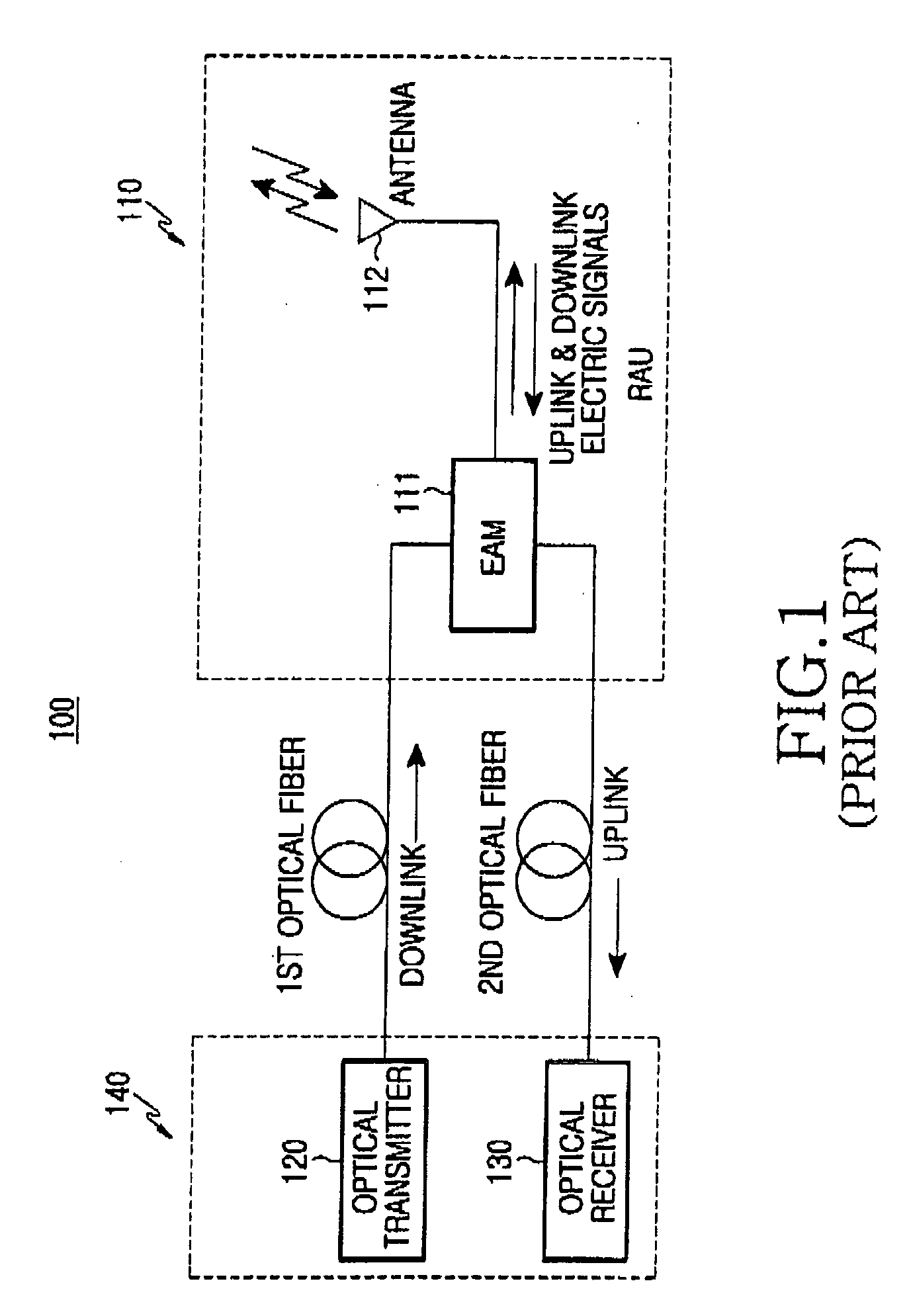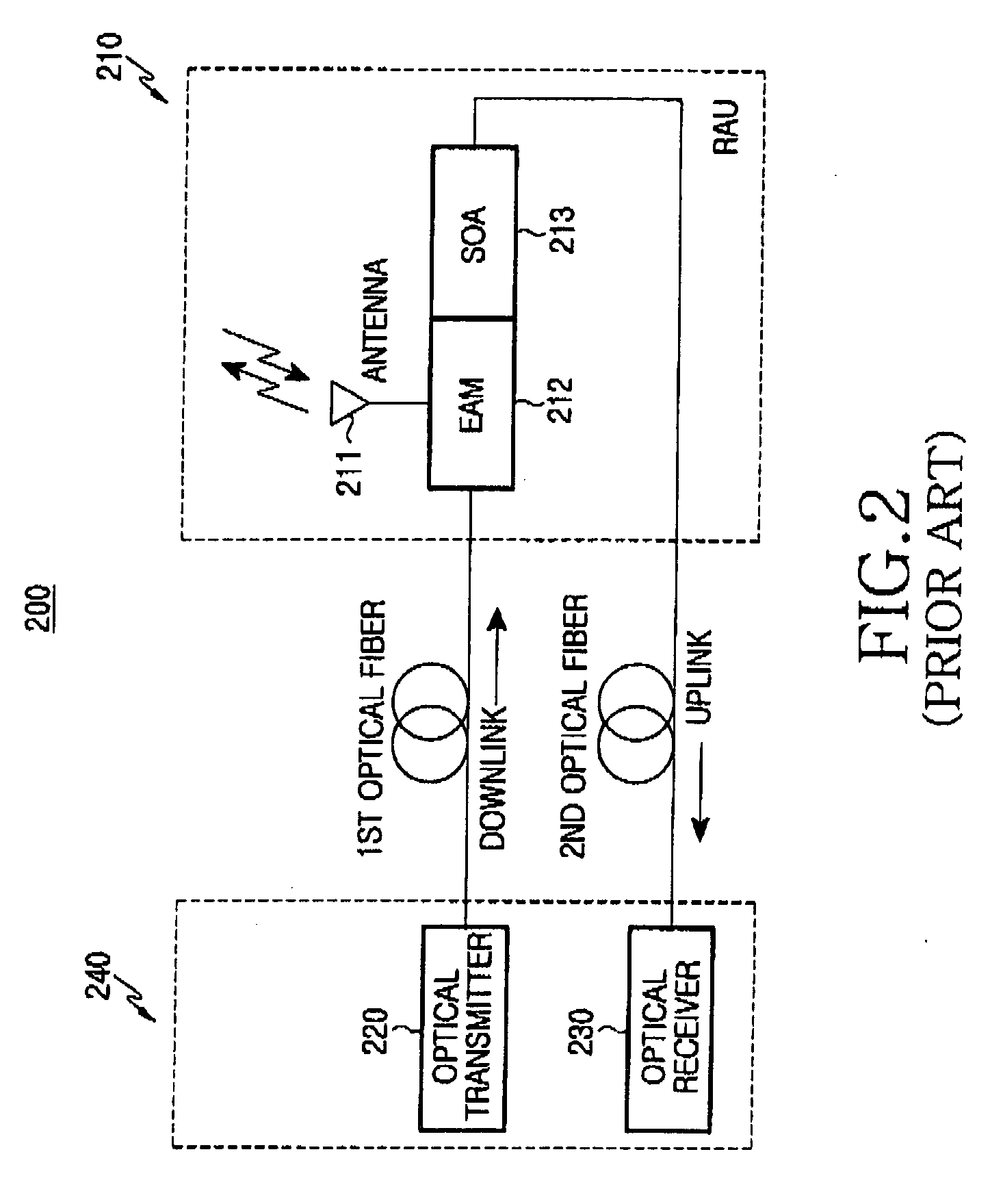Optical network for bi-directional wireless communication
a bi-directional wireless communication and optical network technology, applied in the field of optical networks, can solve the problems of difficult to obtain a suffer from poor reception efficiency, and achieve the effect of sufficient power margin for signals
- Summary
- Abstract
- Description
- Claims
- Application Information
AI Technical Summary
Benefits of technology
Problems solved by technology
Method used
Image
Examples
Embodiment Construction
[0023] Hereinafter, embodiments of the present invention will be described with reference to the accompanying drawings. For the purposes of clarity and simplicity, a detailed description of known functions and configurations incorporated herein will be omitted as it may make the subject matter of the present invention unclear.
[0024]FIG. 3 illustrates a bi-directional optical network for relaying radio signals according to one embodiment of the present invention. As shown, the optical network 300 according to the present invention includes a base station 320 for generating downlink optical signals and detecting uplink optical signals, and a remote antenna unit 310 for transmitting the downlink radio signals over the air and receiving uplink radio signals from the outside of the unit 310. The remote antenna unit 310 converts the received uplink radio signals into the uplink optical signals and outputs the uplink optical signals to the base station 320. The optical network 300 further...
PUM
 Login to View More
Login to View More Abstract
Description
Claims
Application Information
 Login to View More
Login to View More - R&D
- Intellectual Property
- Life Sciences
- Materials
- Tech Scout
- Unparalleled Data Quality
- Higher Quality Content
- 60% Fewer Hallucinations
Browse by: Latest US Patents, China's latest patents, Technical Efficacy Thesaurus, Application Domain, Technology Topic, Popular Technical Reports.
© 2025 PatSnap. All rights reserved.Legal|Privacy policy|Modern Slavery Act Transparency Statement|Sitemap|About US| Contact US: help@patsnap.com



